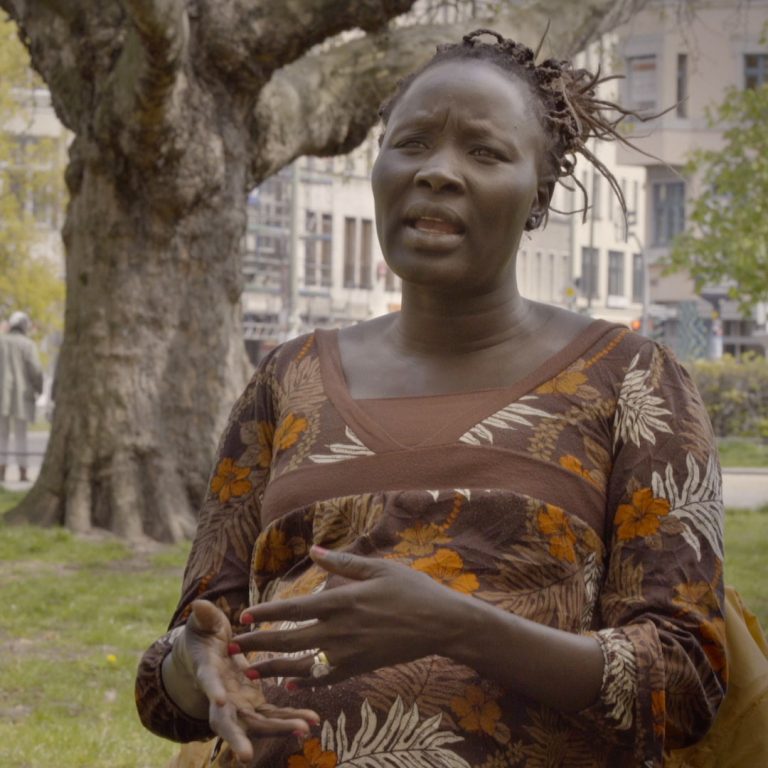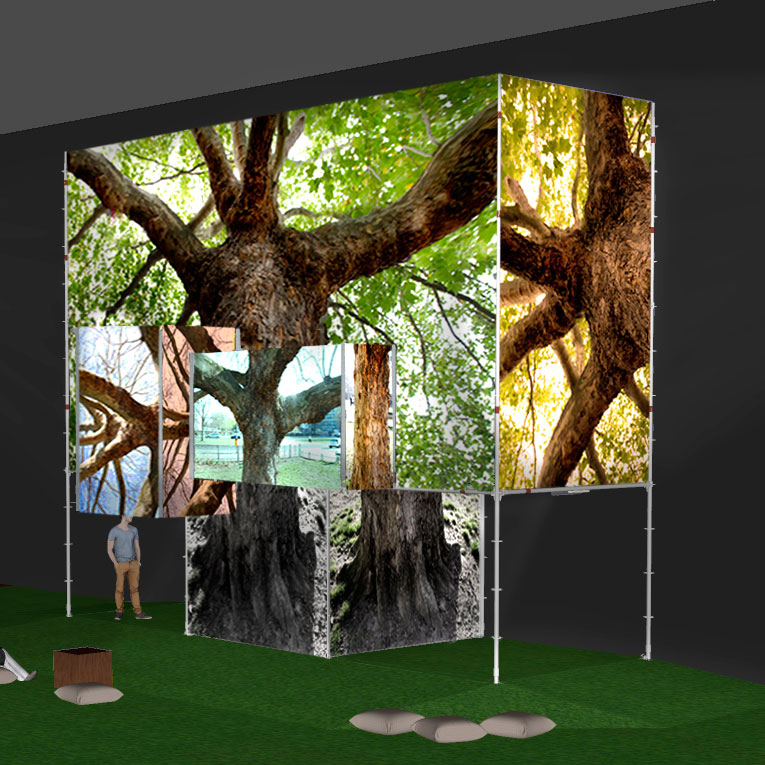Garden Times
(work in progress since 2017)
Garden Times is a video installation that reflects on Germany’s asylum policy towards refugees, mainly of African origin, through the voice of one of its activist leaders Napuli Langa.
The project Garden Times is inspired by my great admiration for the brave work of Napuli Langa, an African activist from the Sudan, who fights for the rights of refugees in Europe. It is also inspired by the sycamore tree from which Napuli protested during a five day strike to demand rights for refugees, especially African refugees, in response to the harsh asylum policy of the German government. These events took place at the Oranienplatz refugee camp (OPLA) in 2014.
The project will consist of a series of photo-video installations, including the pieces Napuli’s Tree and the OPLA Sycamore. Napuli’s Tree is a video of an interview with the African activist Napuli Langa.
The OPLA Sycamore is a large installation, conceived as an expanded sculpture that will also function as a space where, and from which, the audience can feel the experience of being “up in the tree”.
The interior spaces of this construction will contain videos of the interview with Napuli Langa, as well as other performances. Sequences of images of fragments of the tree will be projected on its outer surfaces in a kind of collage. Projections of still and moving images filmed at different times and seasons of the year, mingling to form a kind of kaleidoscope and show the omnipresence of this great tree.
My aim with this project is to establish a poetic link between Napuli Langa and the sycamore tree, to give power to Napuli’s voice and provide a space for reflection in the visual arts through this piece of art, thus leaving a visual record of their historic role and of their presence in the city of Berlin.
It is said that every tree has a spirit. It is the home of a living being that oversees all the activities and energies affecting the tree. This spirit grows with the tree and disappears with its death.
This project describes the symbolic relationship of support and resistance between Napuli and the sycamore tree, and I invite the audience to reflect with hindsight on what happened in the occupied Oranienplatz park in Berlin, between 2012 and 2014.
At the same time, I’d like to give the audience the opportunity to hear the important and influential voice of this African activist who, thanks to her brave strike action for five days up the sycamore tree, contributed to the glorification of those two difficult years of resistance and protest in a Berlin park occupied mainly by refugees from African countries.


